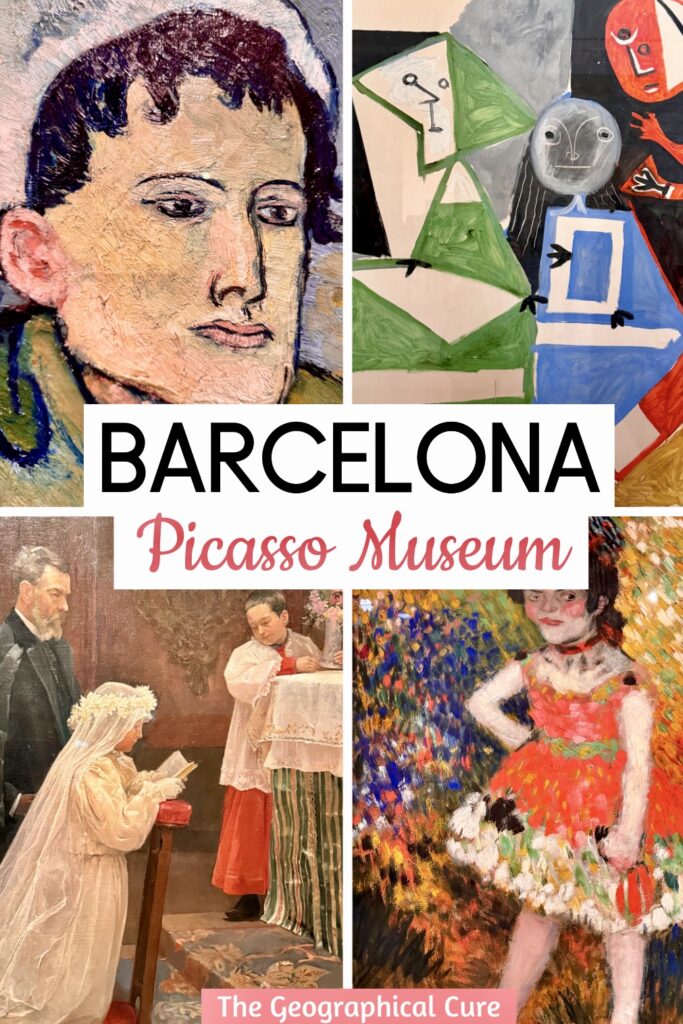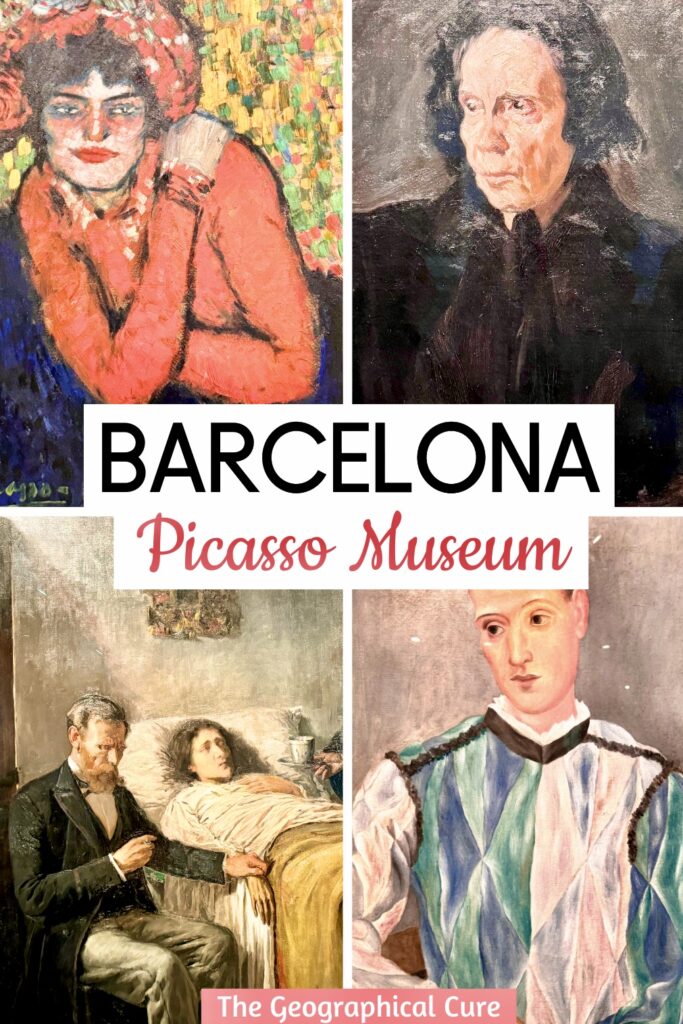Love him or hate him, Pablo Picasso was the most famous, and for me then greatest, artist of the 20th century. Though he made his career in Paris, the most formative years of his life were spent in Barcelona.
It was here that a young Picasso mastered the painting techniques of his artistic forerunners. And it was here that Picasso felt the freedom to experiment.
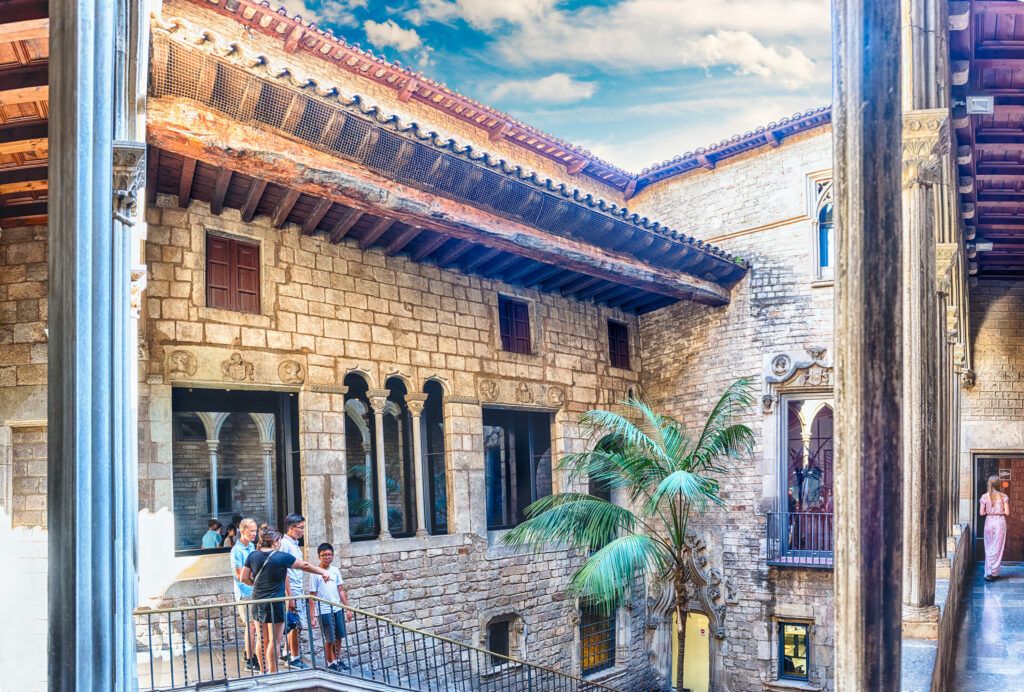
When he left Barcelona, Picasso went to Madrid and then on to Paris to revolutionize the art world.
The artworks in this museum, founded in 1963, capture the period right before fame and stardom.
You won’t see his most famous masterpieces or many Cubist works. But what you will is one of the top Picasso collections in the world, and certainly in Spain.
So, if you are a Picasso fan, even a casual one, a visit to his titular museum in Barcelona is a must do. You’ll see how he moved from being a classically trained painter to a revolutionary artist.
In this guide to the Picasso Museum, I’ll give you an overview of the museum, identify the must see paintings, and give you tips for visiting.
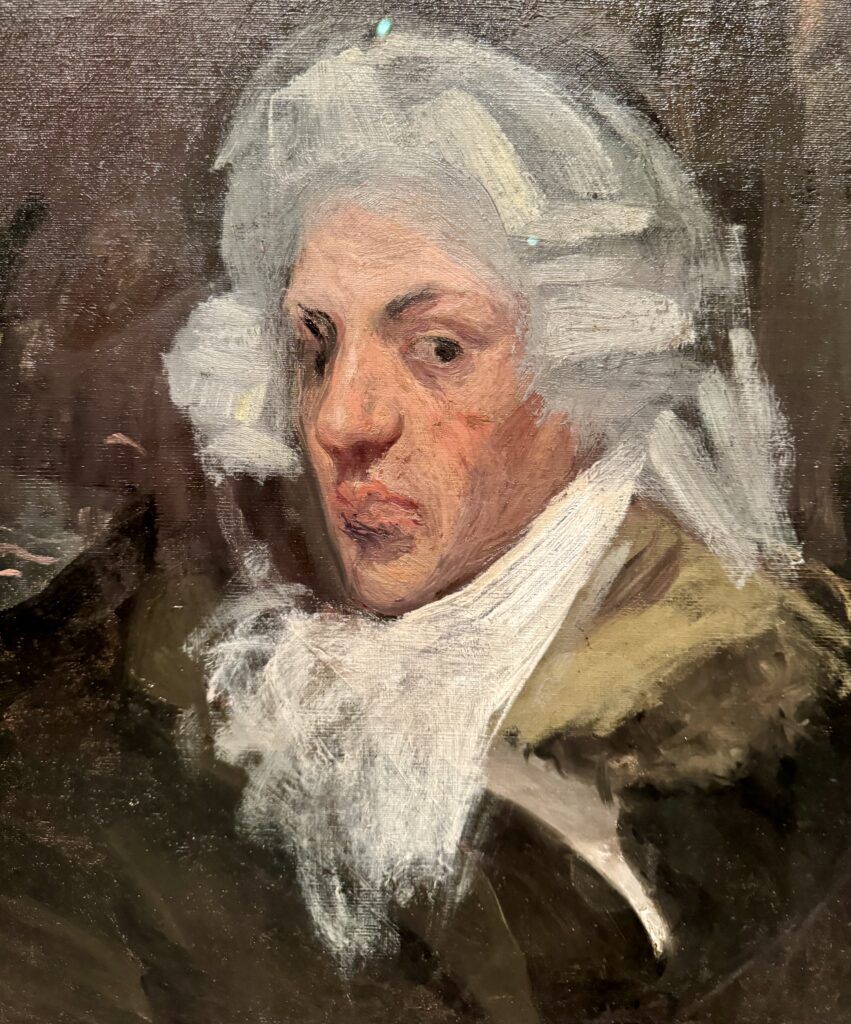
Quick Tips:
- the museum is super popular and you should definitely pre-book a timed entry museum ticket to avoid a long line and guarantee entry
- plan to spend about 2 hours
- expect crowds and noise
- you’ll have to check your bag or backpack
- for the low down on Picasso’s evolution as an artist, you may want to book a guided tour
Overview of the Picasso Museum
The museum sits one floor above a free-to-enter courtyard with several entrances.
Tickets are sold at the center ground floor entry. Those with timed entry tickets can enter to either side.
There are 16 rooms holding a collection of nearly 300 paintings. They are presented more or less chronologically, with some explanatory display panels about Picasso’s life and artistic periods.
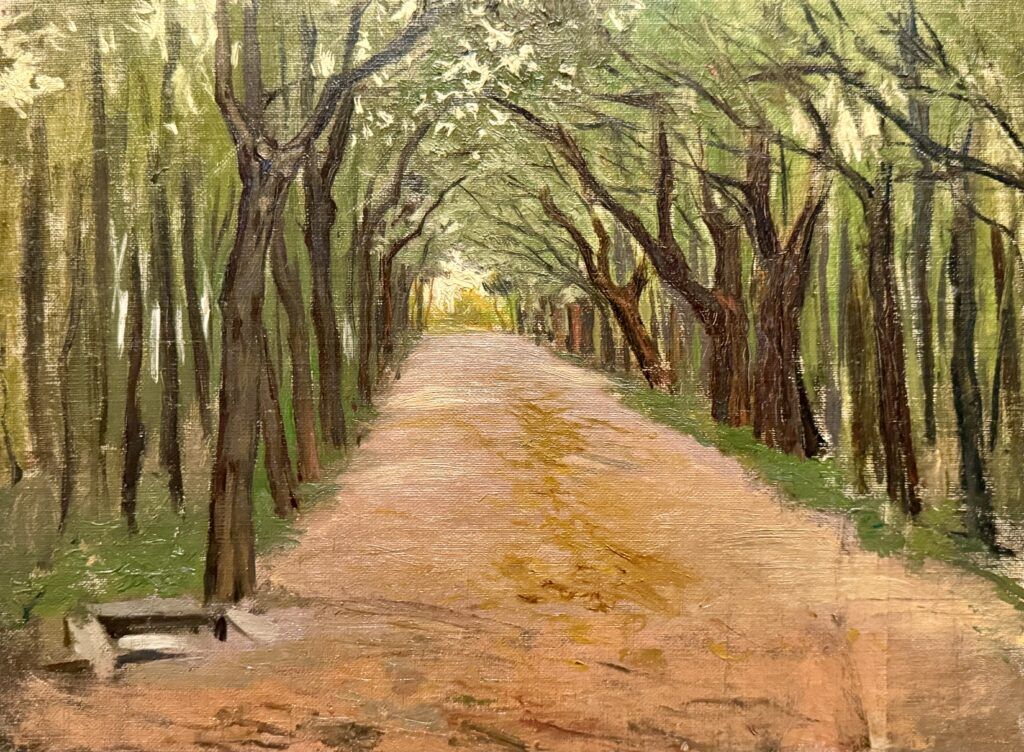
The museum was founded in 1963 with significant donations from Picasso’s close friend and personal secretary, Jaume Sabartés.
Sabartés proposed the idea of the museum to Picasso. He liked it and enthusiastically supported the project by donating many pieces from his own collection.
This initial donation included works from Picasso’s early career. Over time, the museum’s collection grew through additional donations from Picasso himself, as well as acquisitions and further donations from other sources.
Individual paintings are rotated in and out to keep the museum fresh and exciting. But the themes and the chronology remain consistent.
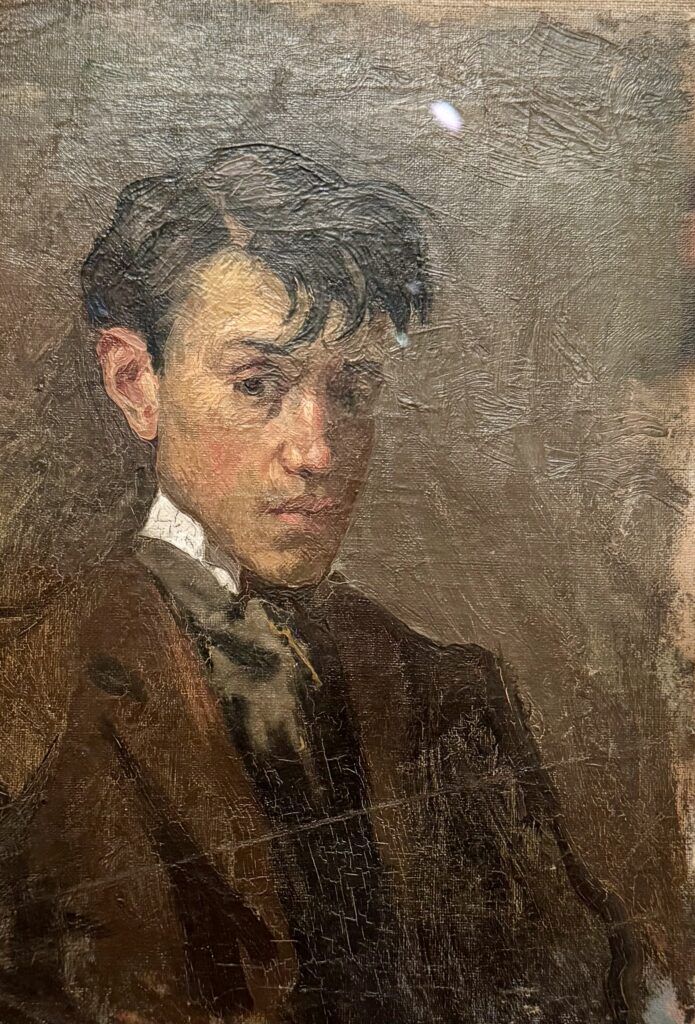
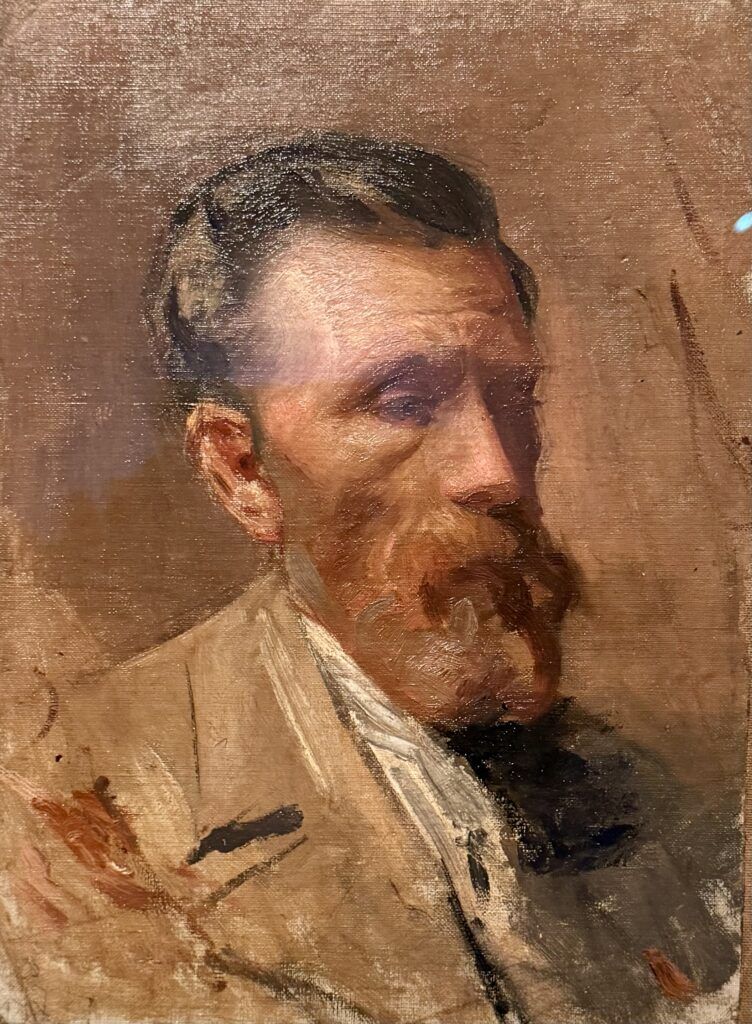
Guide To The Picasso Museum: What To See
Boy Wonder Paintings
In Room 1-3, you’ll find Picasso’s earliest works. Many of them come from his stint in La Coruna, where he lived from age 10 to 14.
There are some small country side scenes. Picasso also painted portraits of his father, mother, and aunt.
There are also some mischievous self-portraits, where Picasso paints himself nude or wearing a wig.
Tia Pepa is Picasso’s most striking early portrait of a family member. He captures a certain world weariness in her eyes, but also a toughness.
These paintings show a sure hand and a dabbling outside conventional academic painting. Picasso is capturing the human essence of his models.
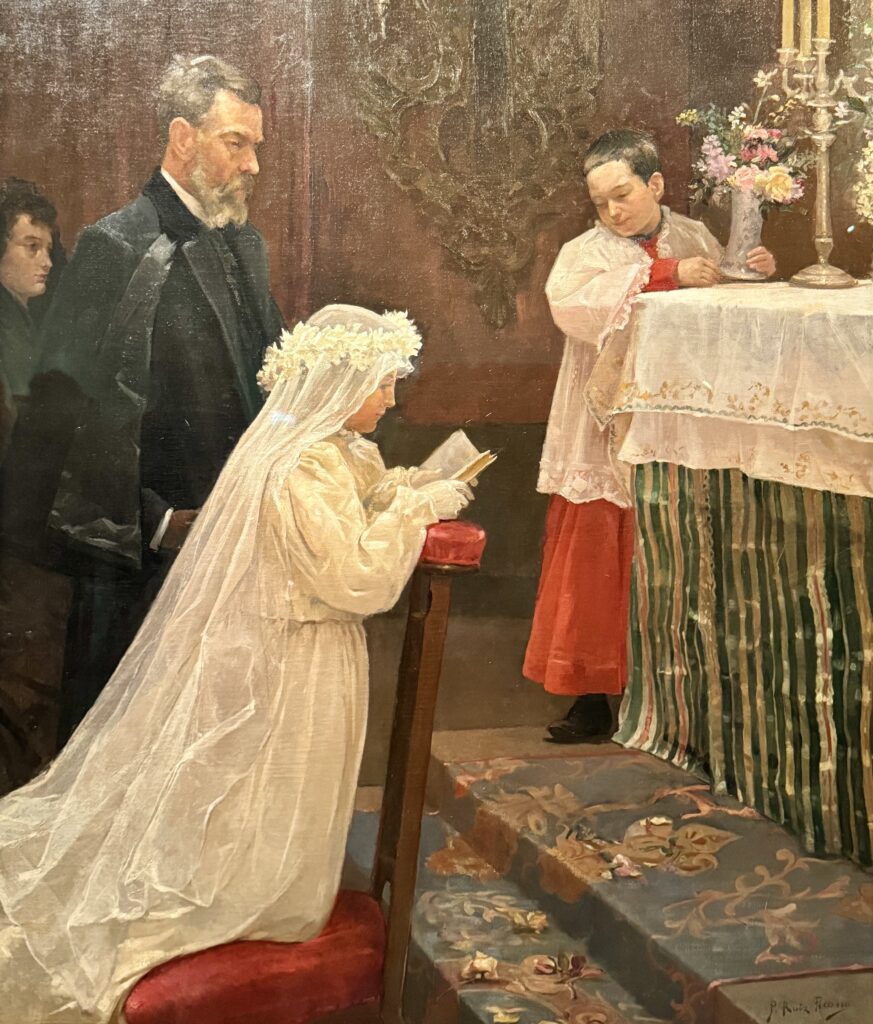
First Communion
The First Communion is one of the artist’s earliest grand canvases. He was just 15 when he painted it.
It’s an utterly conventional religious pieces, which were in vogue at the time.
The composition is quite formal, featuring a young girl dressed in a white communion dress, with an altar in the background.
It highlights Picasso’s attention to detail and ability to capture the solemnity and importance of the moment.
This painting is hard evidence of Picasso’s academic training and ability. Just look at the exquisitely painted veil.
Science and Charity
Picasso’s next important large scale work is Science and Charity. In it, Picasso’s father poses as a doctor at the bedside of a sick woman.
Seeking to portray the realism of the scene, Picasso mostly sticks with academic techniques. But he departs from completely authenticity with artificial decor and the strained posture of the sick person.
This painting, like the one before, shows that Picasso could surely have been a successful society painter, if he had wanted to be.
Three small studies show the predatory work Picasso did for this major painting.
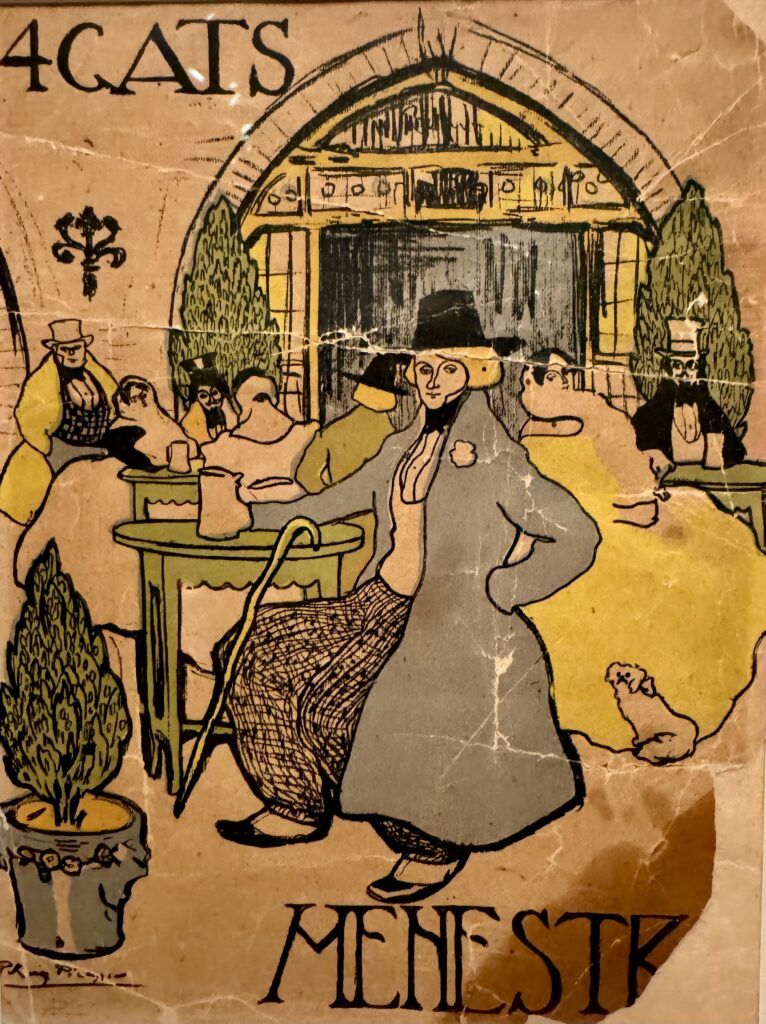
The Four Cats
If there was a place in Barcelona that truly represented modernism, it was the cafe Els Quatre Gats. Open from 1897 to 1903, it served as a gathering point for bohemian artists who had spent time in Paris, such as Casas, Rusiñol, and Utrillo.
Picasso first visited Paris in 1900. He was immediately taken by the louche life style in Montmartre.
He came under the influence of the Impressionists and the Post-Impressionist artist Toulouse-Lautrec.
You can see Lautrec’s influence in the painting he created for Quatre Gats. Unlike Lautrec, however, his brush strokes are harsh and he used intense warm colors.
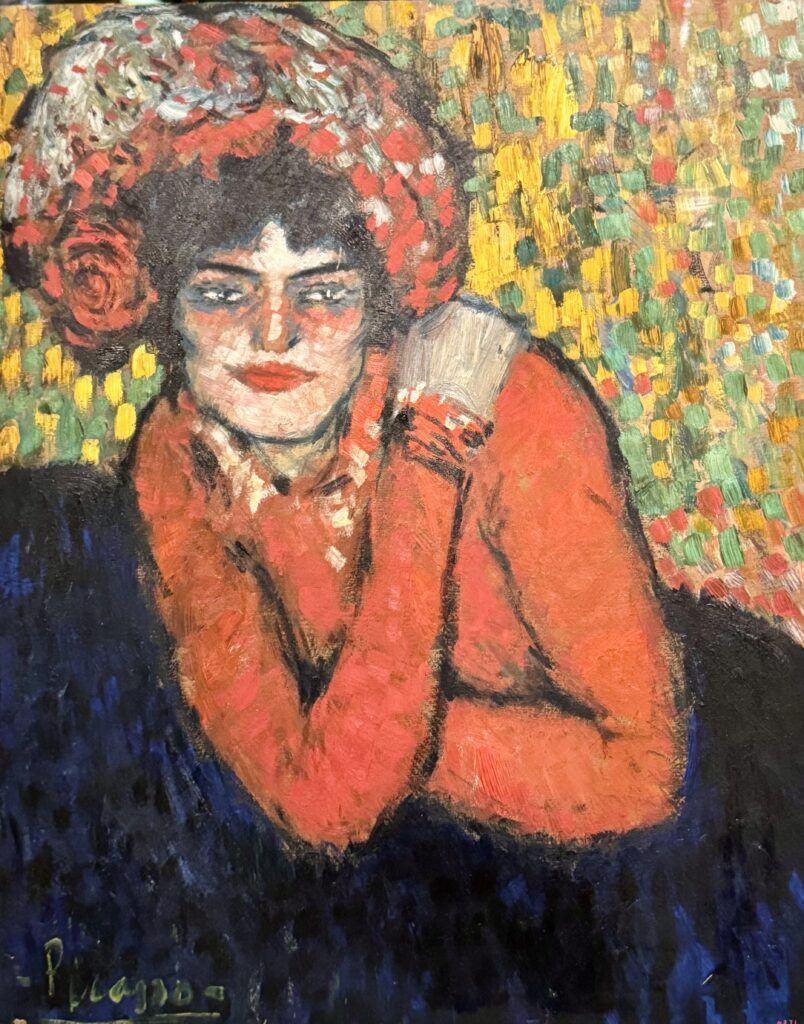
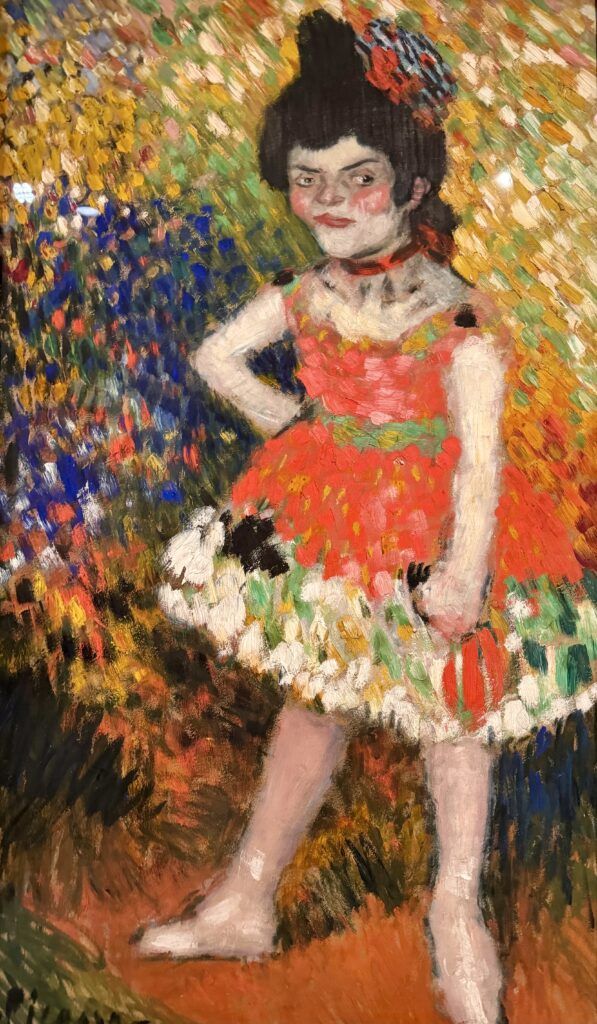
Waiting (Margot)
His portraits of Margot and The Dwarf also suggest he’s been patronizing the nightclubs of Paris, places where ugliness and beauty combine.
Margot is a young woman in extravagant headdress, possibly a prostitute. Her face flushed and eyes narrowed in a vacant stare
The painting shows the strong influence of Cezanne.
Her strong gaze pops out from vivid, mosaics-liked building blocks. Picasso was learning Cezanne’s technique of building a figure with cubes of paint.
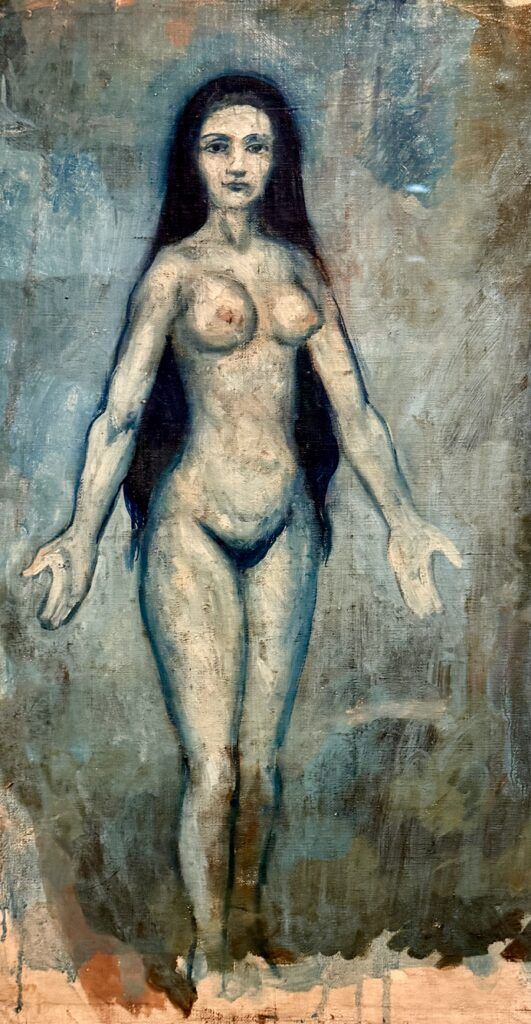
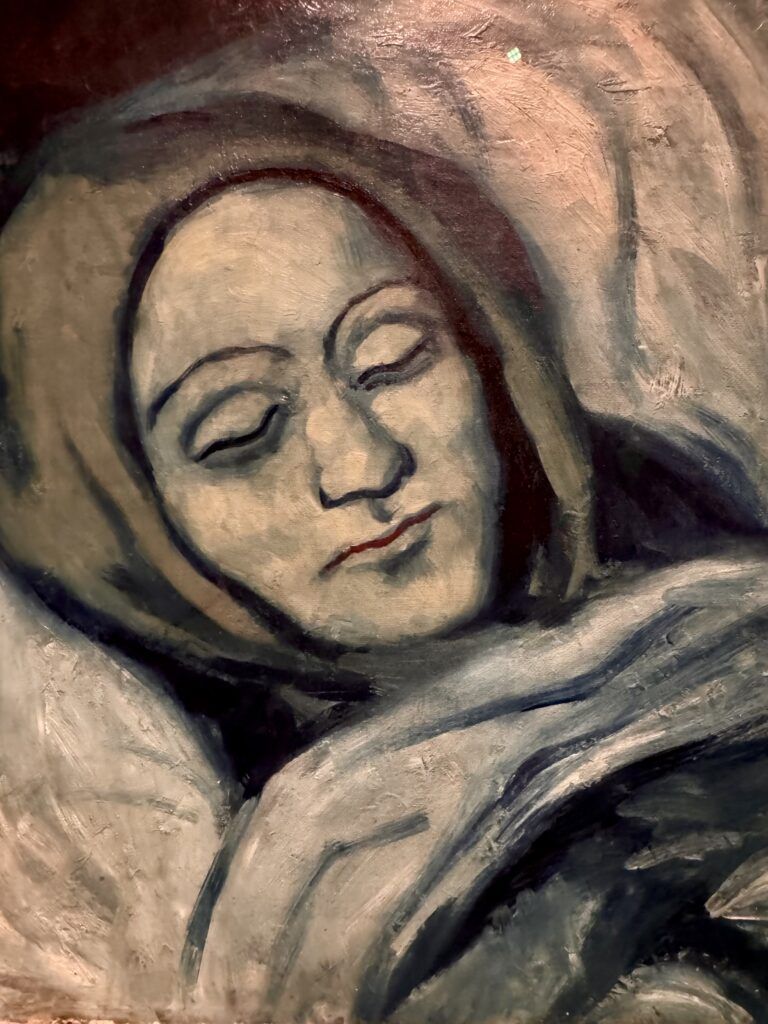
Blue Period Paintings
In 1901, while staying in Paris, Picasso fell into a period of introspection, sparking by the suicide of his best friend Carles Casagamas.
This marked the beginning of his “Blue Period.” His works were tinged with a monochromatic blue, reflecting the artist’s state of mind.
Picasso painted marginalized people and emaciated beggars, sometimes doubled into themselves or appearing ill or hungry. He created a symbolic record of human misery in its many forms.
Perhaps most striking of the lot is the portrait of a recently deceased woman in the morgue of the Hospital de Santa Creu i Sant Pau (shown above). It was painted after Picasso visited the institution with his friend Doctor Jacint Reventós.
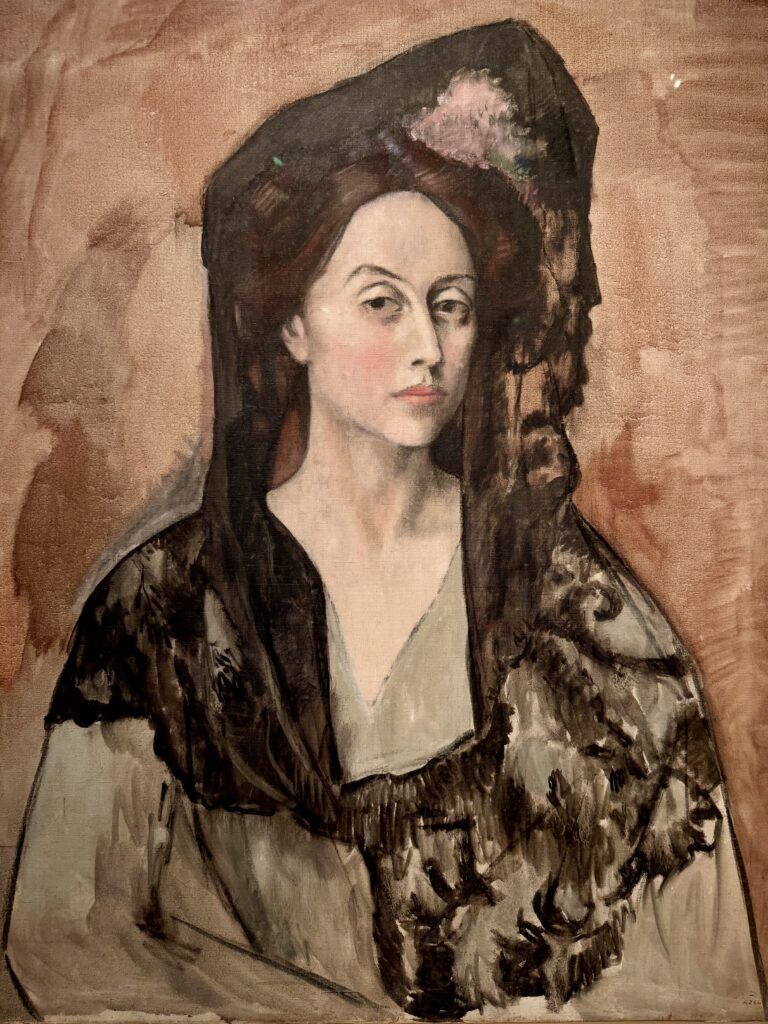
Portrait of Bernadetta Bianco
In 1905, Picasso entered his “Rose Period.”
Spanning from 1904 to 1906, these paintings have a warmer color palette.
Picasso uses shades of orange and pink, and features more serene and romantic subjects, often depicting circus performers and harlequins in a gentle, humanistic style.
Picasso came out of his Blue Period funk, mostly due to meeting his new lover Fernande Olivier. (Her bronze bust is on view).
The museum doesn’t have many paintings from the Rose Period. But there is the lovely Portrait of Bernadetta Bianco.
Benedetta’s intense gaze is the most remarkable feature of Picasso’s markedly classical portrait. The delicate lines of the face and neck of the fair-skinned model emphasise her beauty.
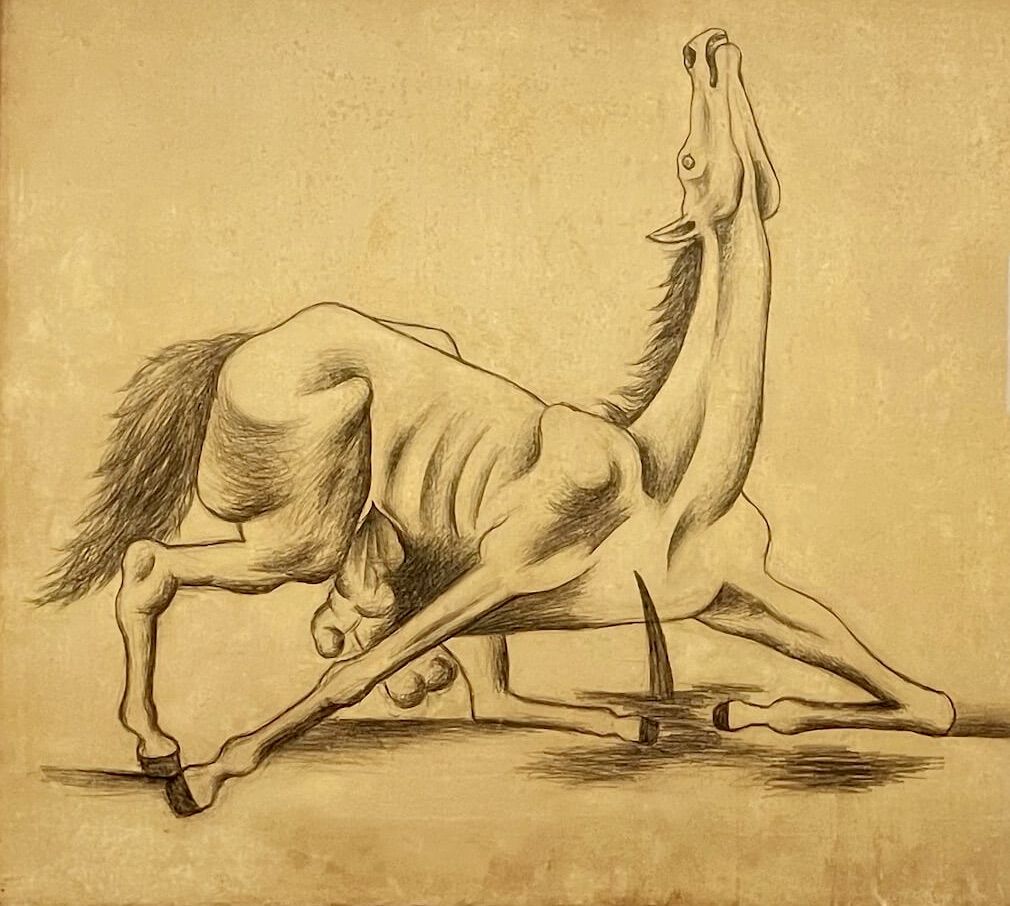
Gored Horse
Picasso painted Gored Horse during his final stay in Barcelona, before moving to Paris for good.
The violent charcoal work reflects Picasso’s fascination with the bloody world of bullfighting.
In the painting, an impaled horse rears up in agony. The imagery of the gored horse is a recurring and powerful motif that appears in several of Picasso’s works, most famously in his monumental 1937 painting, Guernica in the Reina Sofia Museum.
The extreme lines presage the coming of Cubism.
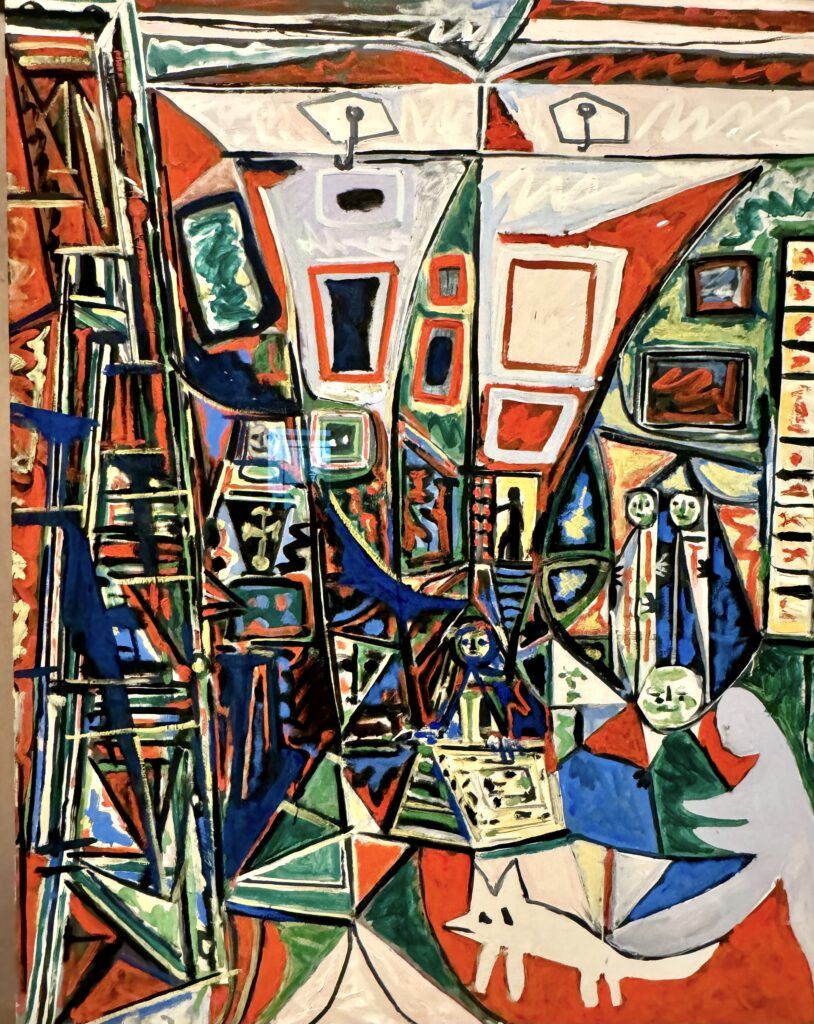
Las Meninas Riffs
Skipping a few decades ahead in Picasso’s life, you will come to a couple rooms chock full of his riffs on Las Meninas.
This Diego Velazquez painting in the Prado Museum is considered one of the greatest paintings by anyone ever.
As a mature artist, Picasso had few peers. So, he sometimes turned to the old masters for inspiration.
And he was obsessed with Las Meninas, churning out a raft of works between August and December 1957.
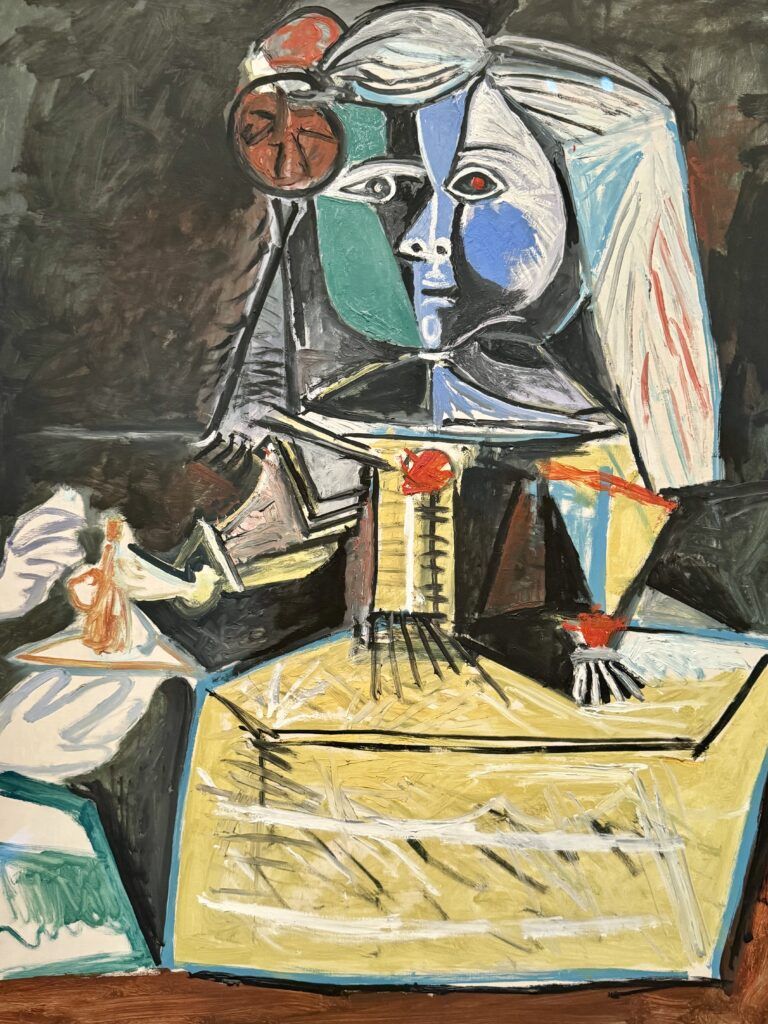
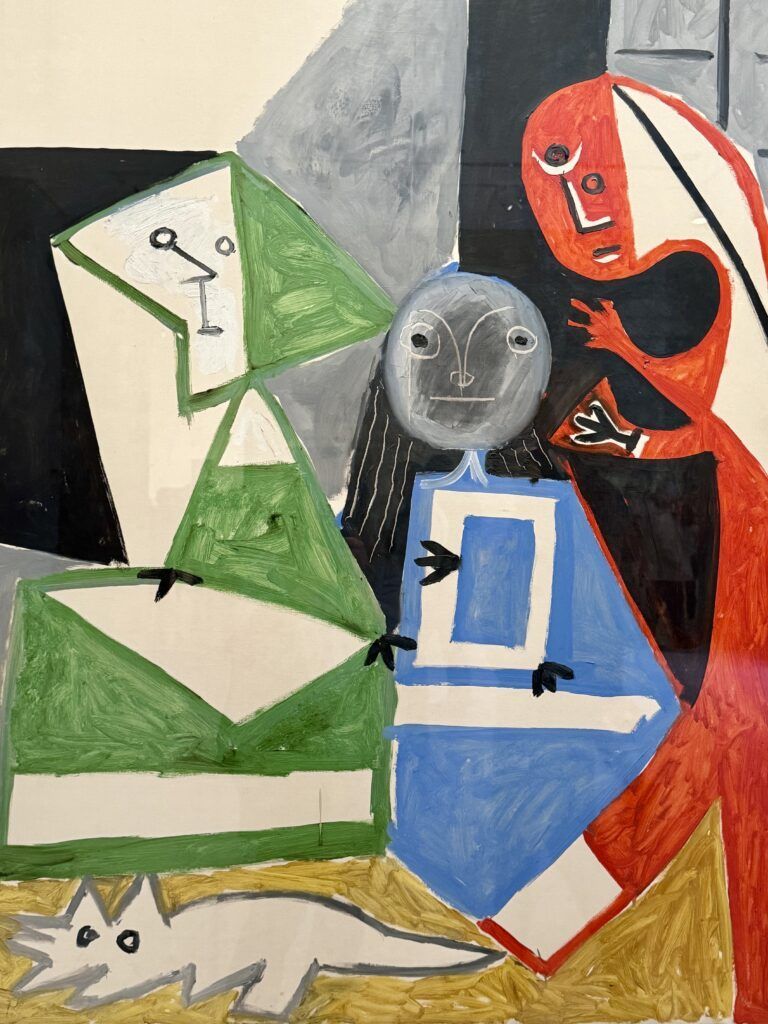
Picasso painted 45 interpretations of the masterwork and donated all of them to the museum.
Picasso deconstructed Velazquez and then injected color, rhythm, and light. He painted a full study of the painting.
He also painted individual portraits of its subjects, metamorphosing the personalities of the characters.
In Picasso’s large version, the king and queen can hardly be seen and Velazquez towers over the painting.
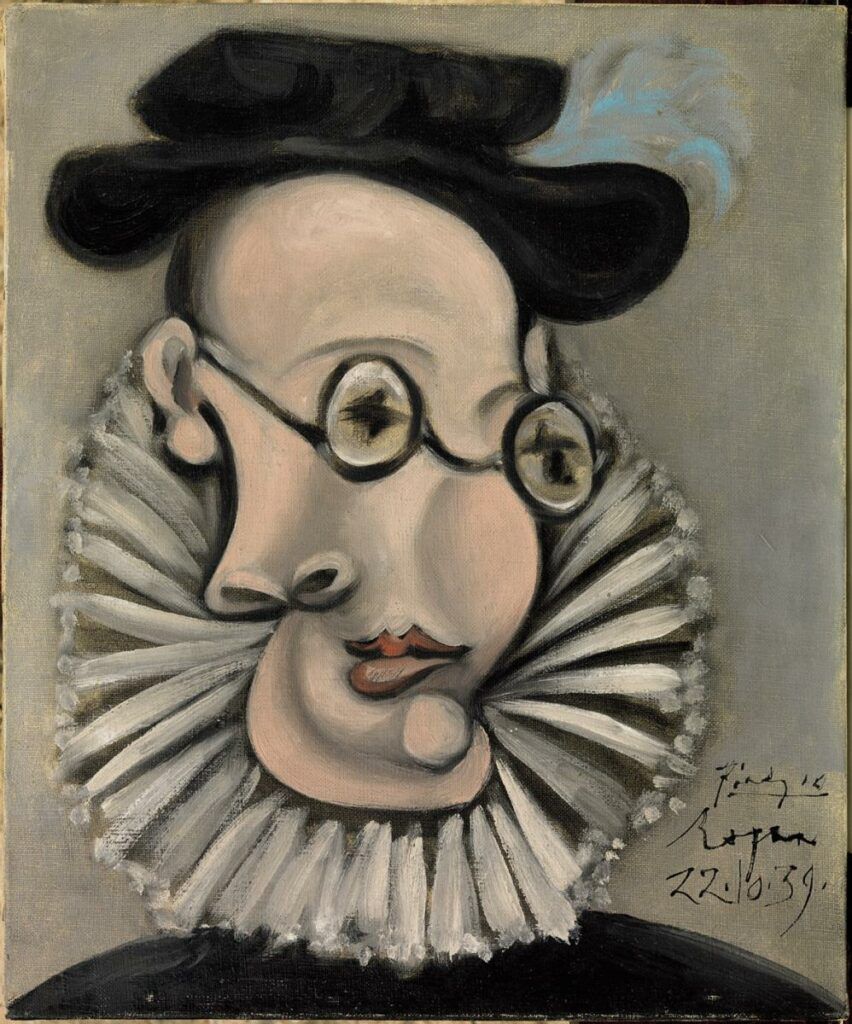
Jamie Sabartes
Room 8 is dedicated to Picasso’s personal secretary and friend, Jamie Sybarites.
In this humorous portrait, Picasso depicted Sabartes as a 16th century royal courtier in 1938. The initial sketches evolved into an oil painting created in Royan.
Portraying Sabartes as a courtier to Philip II cleverly mirrors his role in Picasso’s life, where he loyally followed his master from Paris to Antibes to Royan.
While critics sometimes dismissed Sabartes as merely a pathetically faithful dog, Picasso clearly respected and reciprocated his loyalty in his unique way.
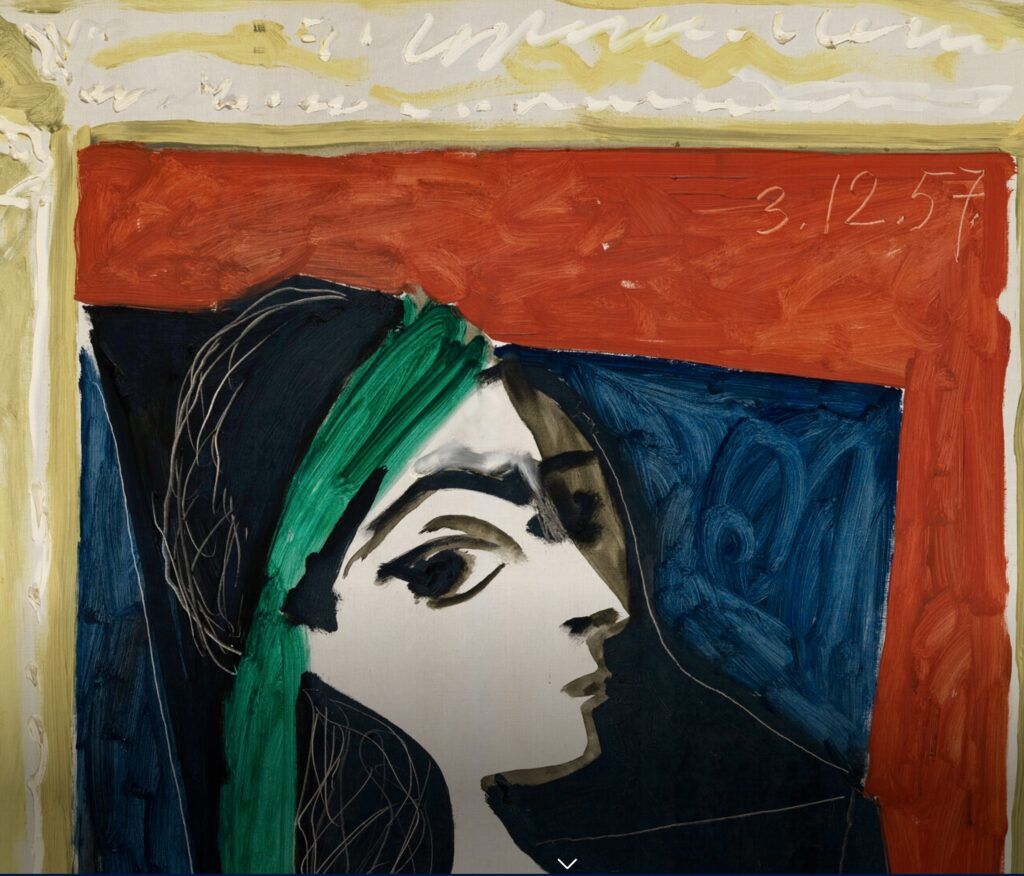
Ceramics
Finally, head along the gallery of the Gothic courtyard to a display of 36 ceramic pieces and three paintings from Picasso’s final years.
They were donated to the museum by his second wife and must Jacqueline Roque. There are bowls and vases in fun animal shapes.
Though multimedia artworks are standard now. At the time, it was revolutionary for an artist to create them.
Picasso’s late-in-life painting are playful. With simple black outlines and crayon colors, Picasso painted a happy sun-splashed world in souther France.
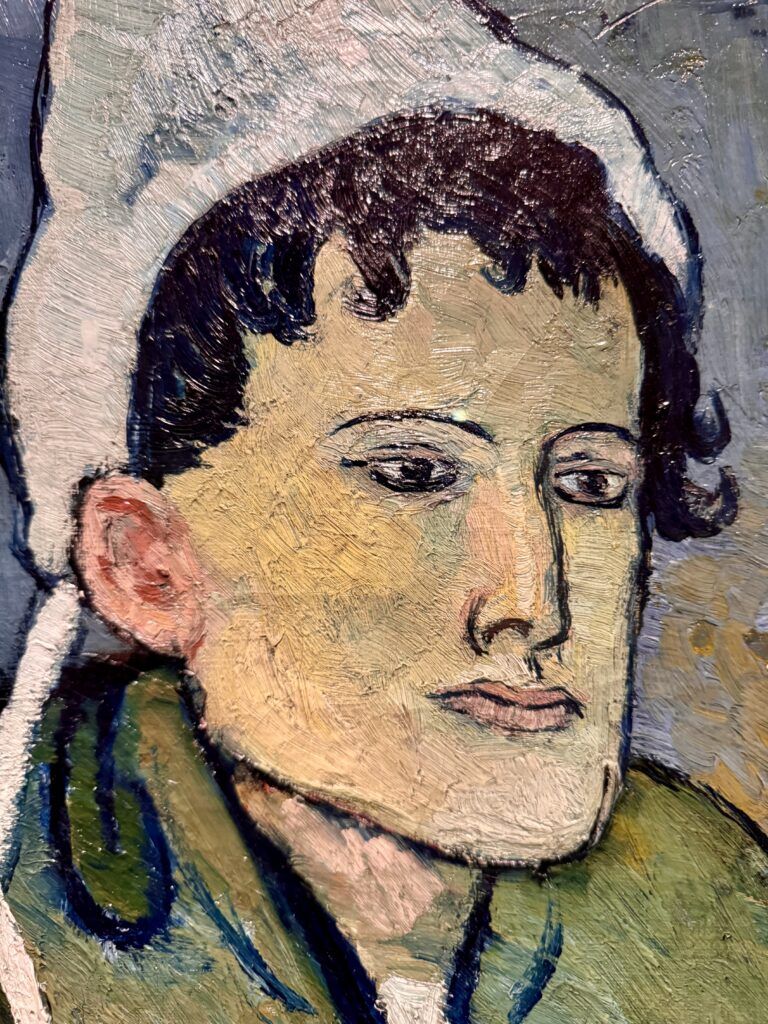
Practical Guide & Tips For The Picasso Museum
Address: Calle de Montcada, 15-23
Hours:
From November through April, open from Tuesdays to Sundays, 10:00 am to 7:00 pm.
From May through October:
- Tuesdays, Wednesdays and Sundays, from 9:00 am to 8:00 pm
- Thursdays, Fridays and Saturdays, from 9:00 am to 9:00 pm
Tickets:
The ticket price is 13 euros. You should buy a timed entry ticket in advance on the museum website (rather temperamental) or on Get Your Guide.
You can buy tickets at the door too. But you should expect a long line. Plus, the museum often sells out.
The museum is free on Thursdays after 4:00 pm and on the first Sunday of each month.
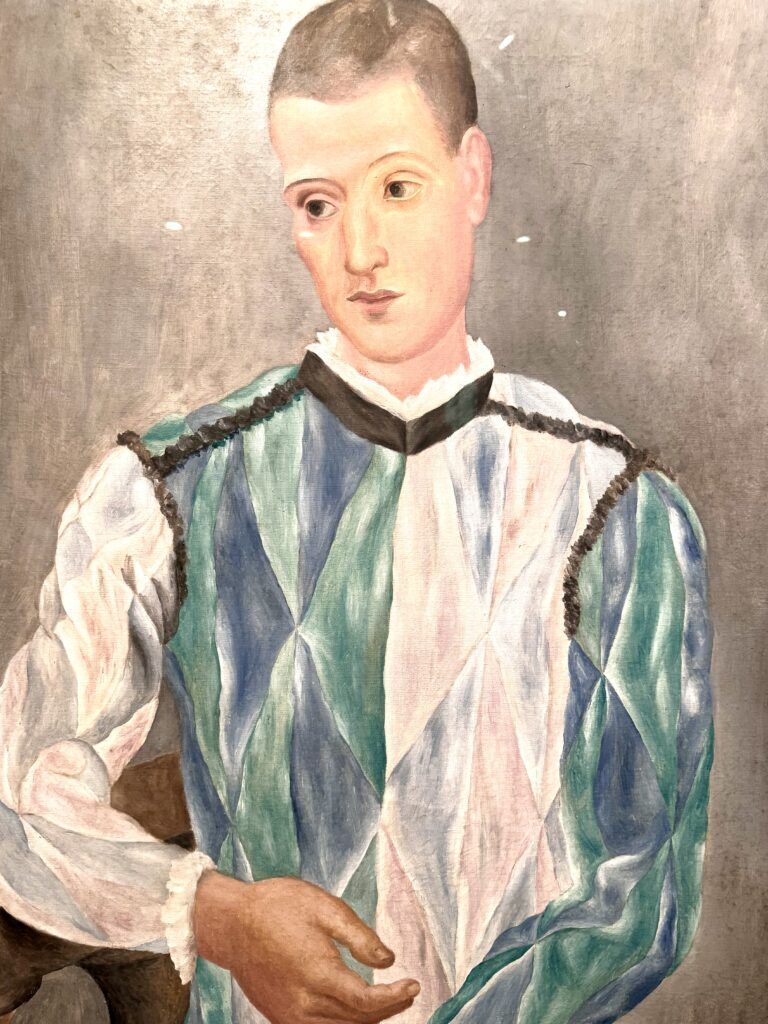
Unless you’re on a guided museum tour, I suggest getting the audio guide. There’s almost no explanatory information about the individual paintings.
Admission is also induced in the Barcelona Articket (covering 6 museums) and the Barcelona Card.
Guided Tours: The museum offers guided tours for 6 euros. You can check out the schedule here. These sell out quickly.
Pro Tips:
There’s almost always a temporary exhibition you can see that relates to Picasso’s life, often focusing on different mediums.
While you’re in this area, you may want to visit Palau de la Musica Catalana (a modernist concert hall), the MOCO Museum, or the Banksy Museum.
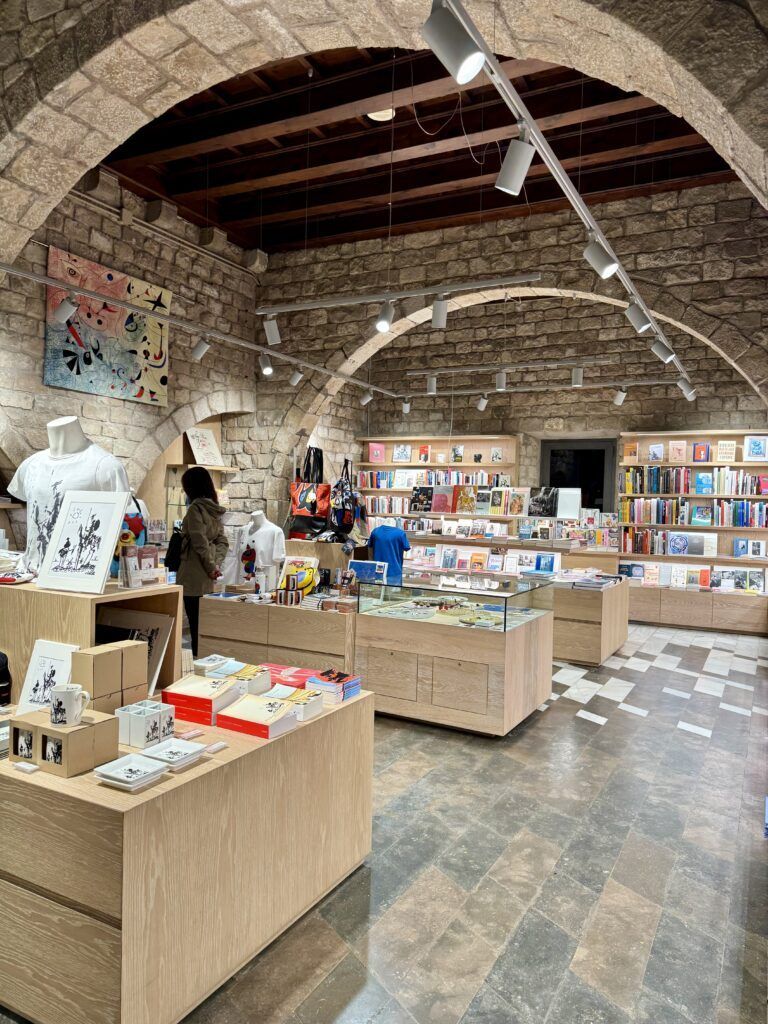
I hope you’ve enjoyed my guide to Barcelona’s Picasso Museum. You may find these other Barcelona travel guides useful:
- 1 day in Barcelona itinerary
- 3 days in Barcelona itinerary
- what to do in the Gothic Quarter
- hidden gems in Barcelona
- landmarks in Barcelona
- guide to Sagrada Familia
- guide to Casa Batllo
- guide to La Pedrera
- guide to Palau Güell
- guide to architecture in Eixample
Pin it for later.

